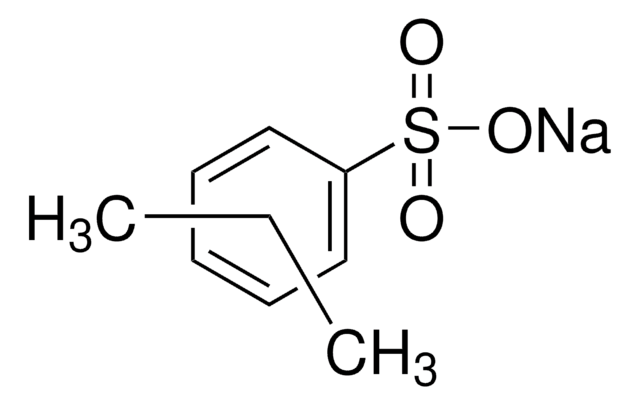W395900
2-Phenylphenol
≥99%, FG
Synonym(s):
o-Phenylphenol, 2-Hydroxybiphenyl
About This Item
Recommended Products
biological source
synthetic
grade
FG
reg. compliance
EU Regulation 1333/2008 & 178/2002
EU Regulation 178/2002
FDA 21 CFR 117
vapor pressure
7 mmHg ( 140 °C)
Assay
≥99%
bp
282 °C (lit.)
mp
57-59 °C (lit.)
application(s)
flavors and fragrances
Documentation
see Safety & Documentation for available documents
food allergen
no known allergens
Organoleptic
odorless
SMILES string
Oc1ccccc1-c2ccccc2
InChI
1S/C12H10O/c13-12-9-5-4-8-11(12)10-6-2-1-3-7-10/h1-9,13H
InChI key
LLEMOWNGBBNAJR-UHFFFAOYSA-N
Looking for similar products? Visit Product Comparison Guide
General description
Signal Word
Danger
Hazard Statements
Precautionary Statements
Hazard Classifications
Aquatic Acute 1 - Aquatic Chronic 1 - Eye Dam. 1 - Skin Irrit. 2 - STOT SE 3
Target Organs
Respiratory system
Storage Class Code
11 - Combustible Solids
WGK
WGK 2
Flash Point(F)
255.2 °F - closed cup
Flash Point(C)
124 °C - closed cup
Personal Protective Equipment
Certificates of Analysis (COA)
Search for Certificates of Analysis (COA) by entering the products Lot/Batch Number. Lot and Batch Numbers can be found on a product’s label following the words ‘Lot’ or ‘Batch’.
Already Own This Product?
Find documentation for the products that you have recently purchased in the Document Library.
Customers Also Viewed
Our team of scientists has experience in all areas of research including Life Science, Material Science, Chemical Synthesis, Chromatography, Analytical and many others.
Contact Technical Service











